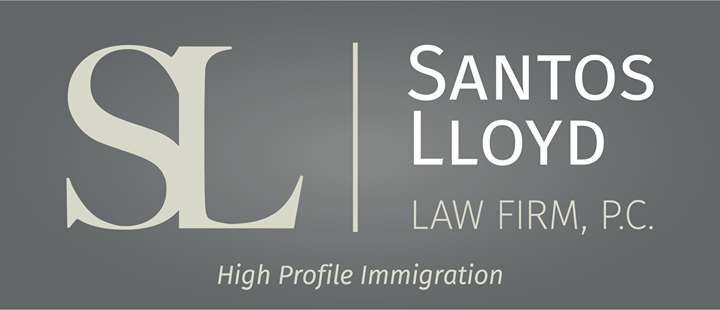Exigences fiscales américaines pour les résidents fiscaux américains.
Olga Guzhva • January 25, 2024
Click here to read this article in English
Lorsqu'ils envisagent d'immigrer aux États-Unis, les gens cherchent souvent à connaître les tenants et les aboutissants des différentes options de visa, le coût du départ, les possibilités d'éducation pour les enfants, mais ils s'informent rarement des implications de la fiscalité américaine. Si vous effectuez une recherche Google sur l'immigration américaine, vous trouverez de nombreuses informations sur les différents visas et leurs conditions d'obtention, sur le processus d'obtention d'une carte verte ou de naturalisation, etc. Les informations sur les règles fiscales américaines n'apparaîtront pas dans votre recherche Google, à moins que vous ne les recherchiez spécifiquement.
- Dans le cadre de la planification de votre immigration, il est très important de connaître et de comprendre les obligations fiscales américaines, en particulier si vous possédez des actifs dans votre pays d'origine.
- En outre, si vous décidez d'ouvrir votre nouvelle entreprise aux États-Unis et de demander un visa d'immigrant, tel que EB-1 ou EB-2 NIW, ou un visa de non-immigrant, tel que E-2 ou L-1, vous voudrez également savoir quels impôts vous et votre entité commerciale devrez payer.
- Même si vous n'immigrez pas aux États-Unis mais choisissez d'y travailler en vertu d'un visa temporaire de non-immigrant, vous pouvez être soumis à l'impôt américain.
En général, (1) les résidents fiscaux américains sont imposés de la même manière que les citoyens américains - sur leur revenu mondial, tandis que (2) les non-résidents sont généralement imposés sur le revenu de source américaine et sur le revenu effectivement lié à un commerce ou à une entreprise aux États-Unis.
Les revenus des résidents sont soumis aux taux d'imposition progressifs qui s'appliquent aux citoyens américains. Les résidents utilisent la table d'imposition et les barèmes de taux d'imposition qui s'appliquent aux citoyens américains et qui figurent dans les instructions du formulaire 1040 et du formulaire 1040-SR2.
La Résidence au regard du Droit Fiscal Américain
L'imposition d'une personne qui n'est pas un citoyen ou un ressortissant américain dépend de son statut de résident.
Si vous êtes résident américain, vous devez déclarer tous les intérêts, dividendes, salaires ou autres rémunérations de services, revenus de biens locatifs ou de redevances et autres types de revenus sur votre déclaration fiscale américaine. Vous devez déclarer ces montants, qu'ils soient gagnés à l'intérieur ou à l'extérieur des États-Unis.
Remarque : Le statut de résident américain aux fins de l'immigration n'est pas toujours le même que celui de résident américain aux fins de l'impôt.
Qui est Résident Fiscal Américain ?
- Un Citoyen Américain est un Résident Américain aux fins de l'impôt américain sur le revenu.
- Un immigrant qui obtient une carte verte est considéré comme un résident permanent légal aux fins de l'immigration et est considéré comme un résident fiscal américain aux fins de l'impôt sur le revenu des États-Unis.
- Un ressortissant étranger peut être considéré comme un résident américain aux fins de l'impôt sur le revenu des États-Unis en vertu du critère de présence substantielle.
- Les ressortissants étrangers peuvent choisir d'être traités comme des résidents à double statut pour cette année d'imposition si certains critères sont remplis. Pour en savoir plus, consultez la publication 519, U.S. Tax Guide for Aliens.
- Vous êtes une personne à double statut lorsque vous avez été à la fois résident et non-résident des États-Unis au cours de la même année fiscale.
- Le double statut ne fait pas référence à votre citoyenneté, mais uniquement à votre statut de résident à des fins fiscales aux États-Unis.
- Pour déterminer l'impôt américain sur le revenu à payer au titre d'un exercice fiscal à double statut, des règles différentes s'appliquent à la partie de l'année où vous êtes résident des États-Unis et à la partie de l'année où vous êtes non-résident. Les années fiscales à double statut les plus courantes sont les années d'arrivée et de départ.
Lorsque vous planifiez votre immigration aux États-Unis, une planification stratégique intelligente de votre processus d'immigration, ainsi qu'une évaluation de vos futures obligations fiscales américaines, sont essentielles pour vous permettre d'avoir l'esprit tranquille et d'éviter les écueils et les problèmes dans vos relations avec l'IRS. Pour s'y retrouver dans la complexité des lois américaines sur l'immigration et la fiscalité, il est souvent nécessaire de faire appel à un conseiller juridique professionnel. Demander l'aide d'un avocat expérimenté en matière d'immigration et connaissant bien la fiscalité américaine peut augmenter considérablement les chances de réussite de votre plan d'immigration, en garantissant le respect de ces réglementations et exigences complexes.
Si vous avez des questions sur ce que cela signifie pour vous, n'hésitez pas à prendre rendez-vous avec l'un de nos avocats expérimentés.
Nous nous ferons un plaisir de travailler avec vous!
Ce blog n'est pas destiné à fournir des conseils juridiques et rien ici ne doit être interprété comme établissant une relation avocat-client. Veuillez prendre rendez-vous avec un avocat spécialisé en droit de l'immigration avant d'agir sur la base de toute information lue ici.

Once you have connected with a college program, have been admitted to the school, and deemed eligible to compete athletically, you will need to secure an F-1 student visa in order to actually attend your new college and begin your time as a student athlete. The first step in the visa process is to receive your Form I-2

For many talented athletes around the world, U.S. college athletics represent a remarkable opportunity to combine elite athletic competition with higher education. In sports such as basketball, soccer, track and field, and tennis, among others, hundreds of colleges and universities across the United States offer struct

Under the new regulation, if a person filed or files Form I-589, Application for Asylum and for Withholding of Removal after October 1, 2024, and the application remains pending with USCIS for 365 days, the applicant must pay an Annual Asylum Fee (AAF) on the one-year anniversary of his or her filing date.



